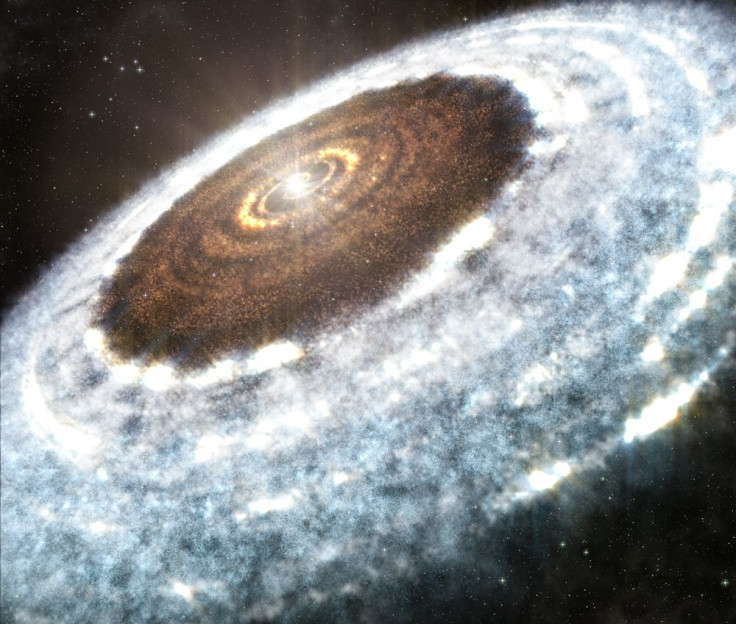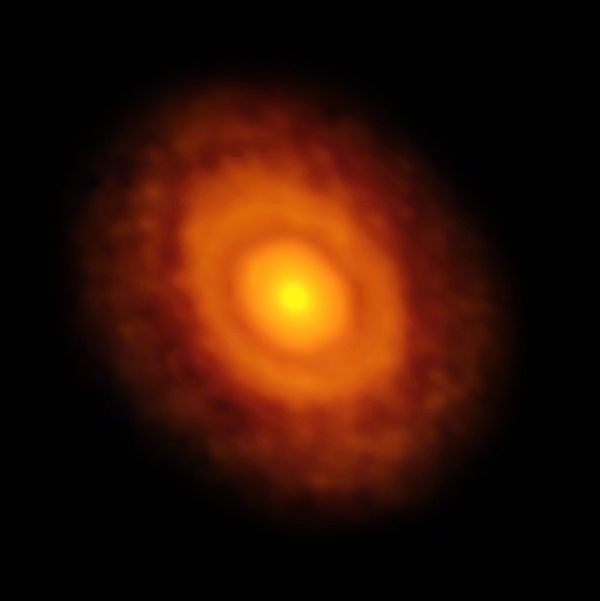A Young Star’s Snow Line Has Been Detected For The First Time Ever

We live on one, but we don’t really understand the intricacies of how planets form. Scientists generally have to study planets that already exist, and as NASA said in a recently released statement, trying to learn about the life cycles of planetary systems using existing examples “is like trying to learn how people grow from babies to children to teenagers, by only studying adults.”
Now, in a major discovery, scientists have detected the “water snow line” — the region where the temperature drops sufficiently low for snow to form — in a protoplanetary disk around a young star. A protoplanetary disk provides the raw materials for planets that are formed as a result of accretion of dust and debris left over from the star’s birth.
Usually, this “snowline” is located too close to the star for any observation to be possible. But in this case, the snowline around the young star — named V883 Orionis — was pushed out to a far greater distance than is normal because of a sudden and drastic increase in the star's brightness, which heated the inner portion of the disk.
“The ALMA [Atacama Large Millimeter/submillimeter Array] observations came as a surprise to us,” Lucas Cieza, an astronomer at Diego Portales University in Chile and lead author of a study describing the findings, said in a statement.
Although this is the first time such a snow line has been observed, the researchers believe that the phenomenon that made the observation possible — outbursts blasting the water snow line to about ten times its typical radius — may very well be a common occurrence.

“The distribution of water ice around a young star is fundamental to planet formation and even the development of life on Earth. ALMA’s observation sheds important light on how and where this happens in protoplanetary disks when young planets are still forming,” co-author Zhaohuan Zhu, an astronomer at Princeton University, New Jersey, said in a statement. “We now have direct evidence that a frosty region conducive to planet formation exists around other stars.”
© Copyright IBTimes 2025. All rights reserved.






















